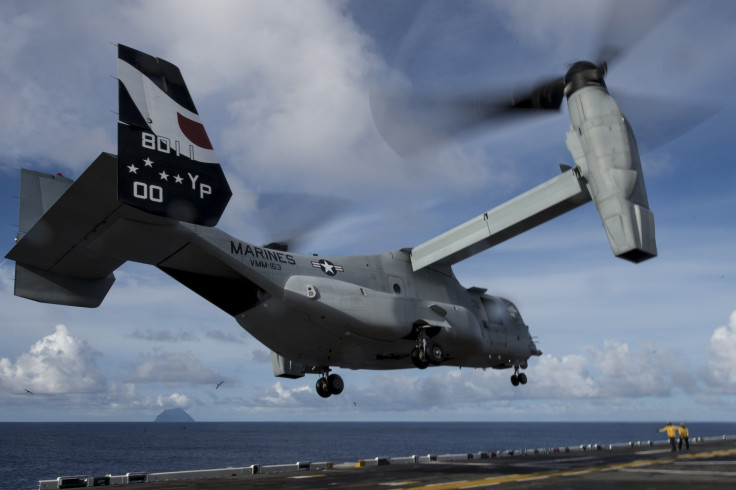Bell-Boeing's Support Contract For V-22 Ospreys Will Benefit Texas, Pennsylvania Facilities

Bell-Boeing, a joint venture between Boeing and Textron aircraft, has won a huge contract to support the V-22 Osprey aircraft platform. The $379.3 million contract announced Friday will provide maintenance repair and consumable material support for the 375 Ospreys that are currently used by the United States Air Force and the Marine Corps.
The V-22 Osprey was developed to carry troops, ordnance and supplies into the battlefield as a presumed replacement for the aging AV-8b Harrier. It is the world's only tilt-rotor aircraft, meaning that it can fly in multiple configurations: with the propellers pointing forward in a traditional aircraft stance, or the rotors can be rotated to take off in the same manner as a helicopter.
The history of this aircraft is not a positive one; during the testing phase from 1991 to 2006, there were four crashes of the aircraft that resulted in 30 fatalities. After starting active service with the military in 2007, there have been seven crashes, including two in combat. Even after being cleared for active service, there have been numerous other incidents that have resulted in an additional 12 fatalities.
Reports have said the V-22 is now the most in-demand and reliable aircraft in U.S. military service. But an USAF pilot told the International Business Times under condition of anyonymity that this is a very difficult aircraft to fly even when everything is functioning correctly. There is an uneasy feeling in the military aviation community, which also happens to be very superstitious, that most pilots don’t want to look at it let alone fly it.
After years of design failures and mishaps, the Ospreys have accumulated more than 450,000 flight hours. It is expected that within the coming year, the United States Navy will also be using a variant of the aircraft and this contract would be a significant boon to facilities and employees of the joint venture.
A report by Defense Blog indicates that the contract will positively impact the facilities in Maryland, Texas; and Philadelphia. Which means all proceeds of the contract will go to benefit workers in America, breathing new life into areas that are struggling for economic growth.
This contract will only cover support to the United States military at this time. While the U.S. has sold several of the aircraft to allied forces, support for those craft and crews will not be provided under this contract.
© Copyright IBTimes 2025. All rights reserved.






















